
Helping butterflies facing a fight to survive
In 2022, a new Red List of British butterflies was produced and shockingly included around half of our 59 British species, seven of which can be found in the Forest. Despite this worrying news, our work at the Heart of England Forest is helping some of those on the Red List, as well as other species.

Why are species in decline?
Habitat destruction
Of the butterfly species that have declined, 86% are specialists. Specialist species are unable to adapt to use other habitats and food sources as quickly as generalist species.
For example, the brown hairstreak will only lay eggs on young blackthorn shoots in relatively sunny but sheltered positions. With blackthorn widespread you would think the brown hairstreak is thriving but yearly hedge flailing, hedgerow removal, and a decline in traditional woodland management have made their specific breeding habitat surprisingly rare.
Worryingly some butterflies under threat, like the small heath and wall brown, are not specialists. Although the small heath is doing well in the Forest, it is suffering elsewhere due to the loss of suitable grassland habitat. Wall brown were once common across Worcestershire and Warwickshire, but have declined rapidly, likely due to climate change and nitrogen pollution, and they no longer breed in either county.
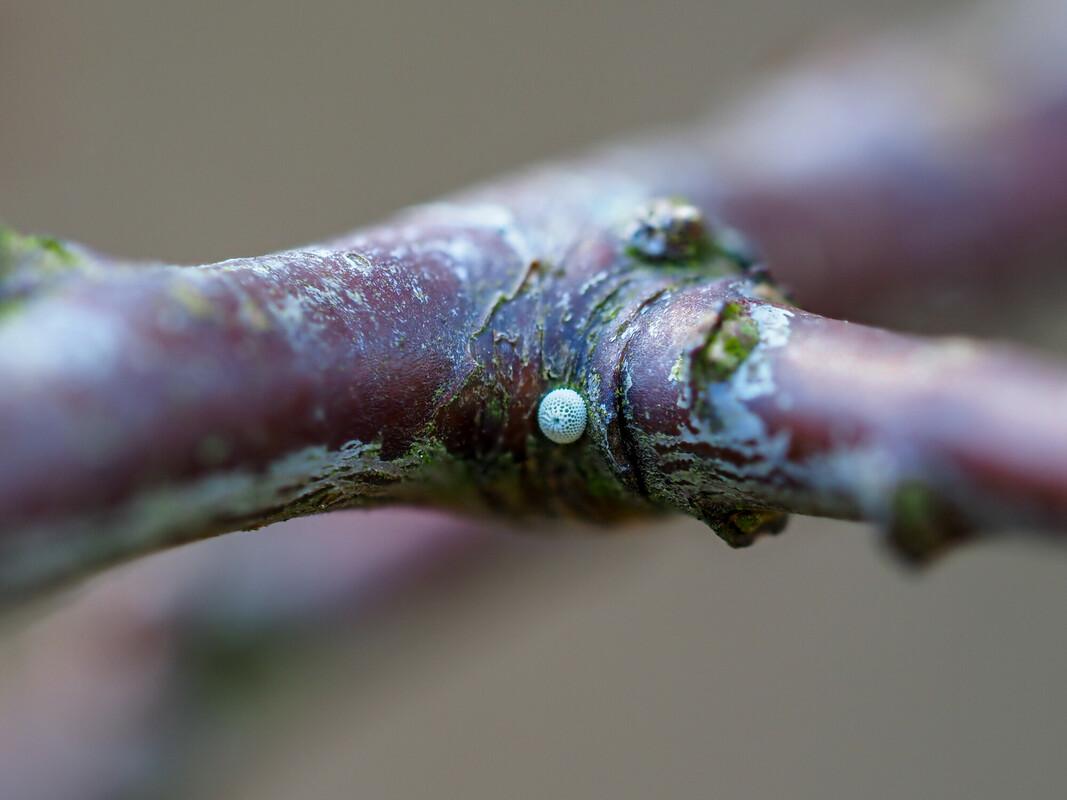
Tree diseases
Tree diseases have had their effect on our butterflies too. Dutch elm disease (DED) has been devastating for the white-letter hairstreak, which use elms as their sole caterpillar food plant. Unsurprisingly, DED killing masses of elms has led to a population decline of over 90% for this butterfly since the 1970s.
Changes in land management
The decline of butterflies has not been a recent phenomenon, with some extinctions acting as a ‘canary-in-the-coalmine’ for declining biodiversity witnessed in our lifetimes. The mazarine blue was once widespread in scattered colonies across England but became increasingly rare as The Enclosure Act and changes in land management altered its habitat, until its ultimate extinction in 1903. The extinction of the large copper was even earlier in 1851 due to the draining of fenland and changes in fenland management.
Climate change
The most recent Red List of butterflies has made apparent the effects of climate change, too. Large heath, mountain ringlet, northern brown argus and scotch argus – all specialists of cooler, wetter climates in Britain – have been placed on the Red List.
On the contrary, climate change has also helped more southerly-distributed species in Britain to rapidly expand across the country; we now yearly record Essex skipper in the Forest which, as the name suggests, was once only found in and around Essex.
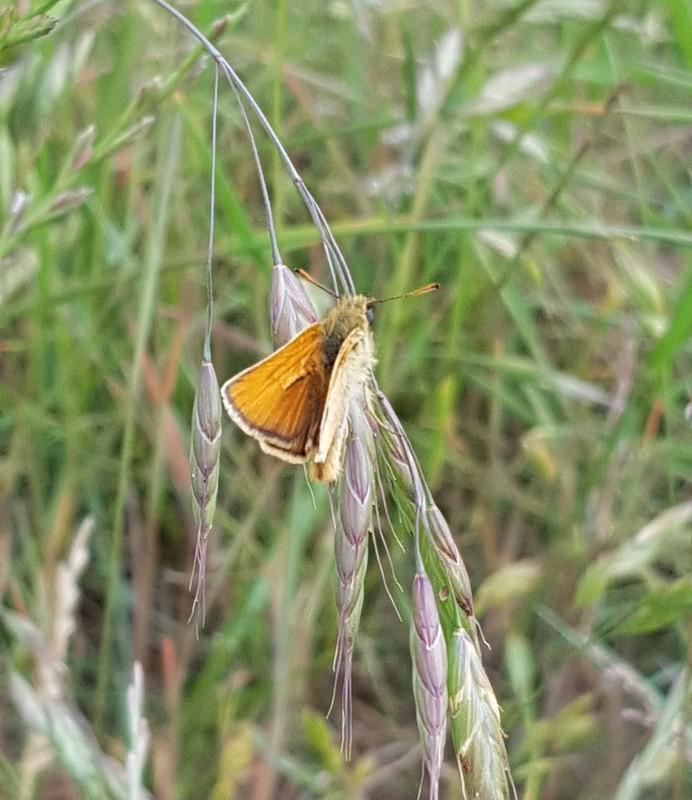
How our work in the Forest is helping
Over 30 butterfly transects and other butterfly surveys are completed across the Forest by volunteers and staff each year, allowing us to monitor our butterfly populations and effect changes to help them. These transect records are uploaded to the UK Butterfly Monitoring Scheme which will then help the monitoring of butterflies at both a regional and national scale.
The inclusion of butterfly foodplants in our tree planting mix is evidently helping species which rely on these. In the oldest of our new woodlands like Dorothy’s Wood and Giddings Wood, you may easily see dozens of brimstones because of the now mature buckthorn we have planted.
Our planting of goat and grey willows, as well as their natural germination through our new woodland, has created possibly the best population for purple emperors in the Midlands; if you look at hilltop oaks around July, you may very easily see one!
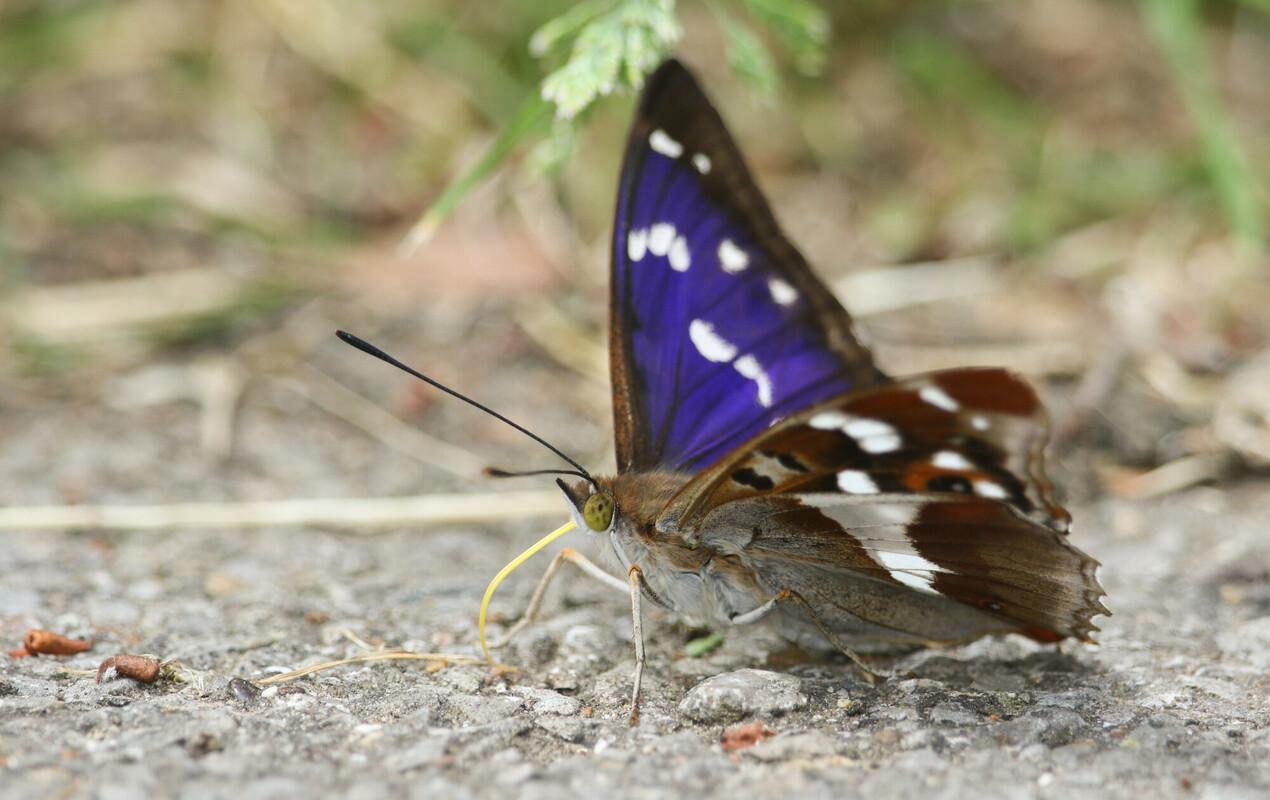
The decline of traditional woodland management has been particularly detrimental. Prior to this, butterflies like the grizzled skipper and Duke of Burgundy were seen mostly in managed woodlands; neither are found in woodlands locally anymore. A woodland specialist like the wood white has only managed to hold on locally due to focused conservation and reintroductions.
Places in the Forest, such as Gorcott Hill Wood, are being managed for the benefit of woodland species like the silver-washed fritillary and white admiral, through the creation of scallops in rides which provide a mix of vegetation heights which these butterflies need for shelter, food, and egg laying.
Thankfully, wych elm has greater resistance to Dutch elm disease (DED) when compared to other elms locally and continues to grow in ancient woodlands like Bannam’s Wood and Alne Wood, allowing white-letter hairstreak populations to continue in our area. These populations have been helped around Spernal with the planting of disease-resistant elms at five woodlands, supplied by Butterfly Conservation Warwickshire. Once these trees are tall enough, they also should become home to permanent white-letter hairstreak colonies without the threat of destruction from DED.
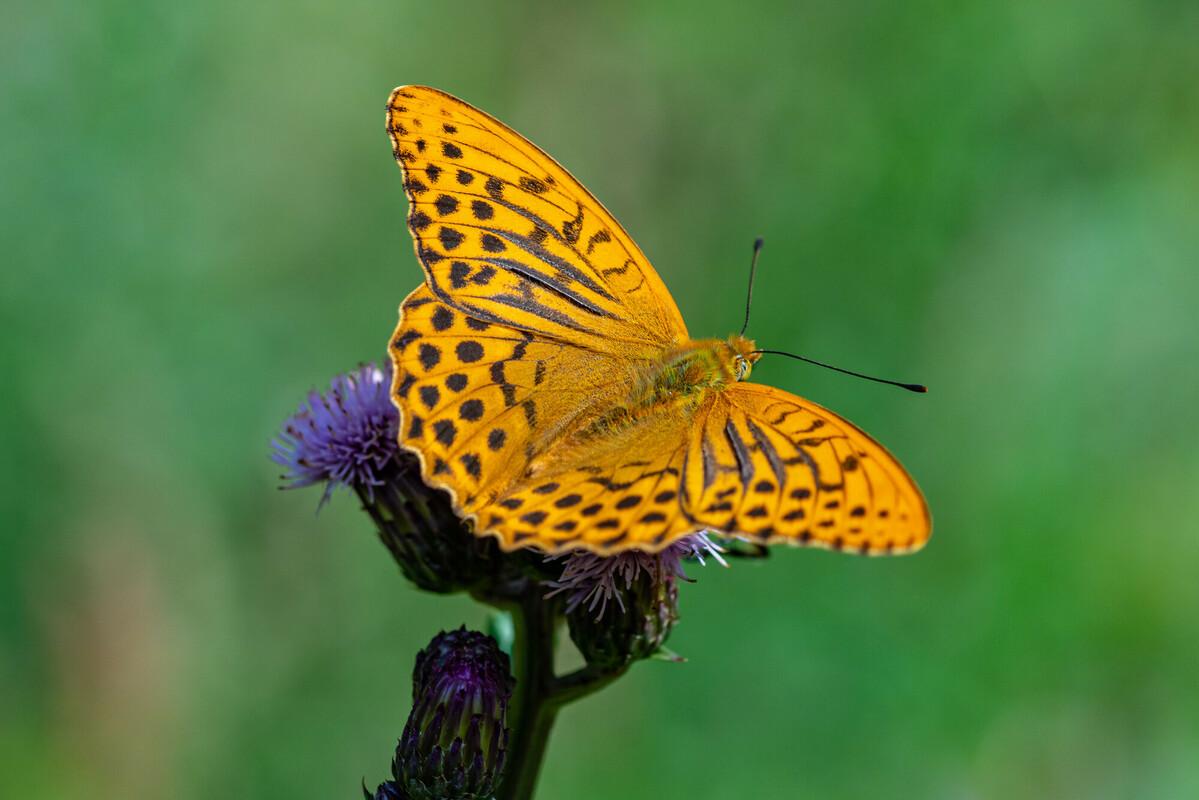
We are also creating linear corridors of wildflower grassland through Spernal as part of our Pollinator Pathway partnership with Severn Trent. These areas until very recently were dominated by grasses but are now host to common bird’s-foot trefoil, black knapweed, and wild carrot, providing food for adult butterflies and their caterpillars.
Common blue and marbled white are becoming more common in these areas. As well as this, we are conserving and expanding wildflower grasslands elsewhere in the Forest, with sites like Sheriffs Lench providing suitable habitat for both grizzled skipper and dark green fritillary.
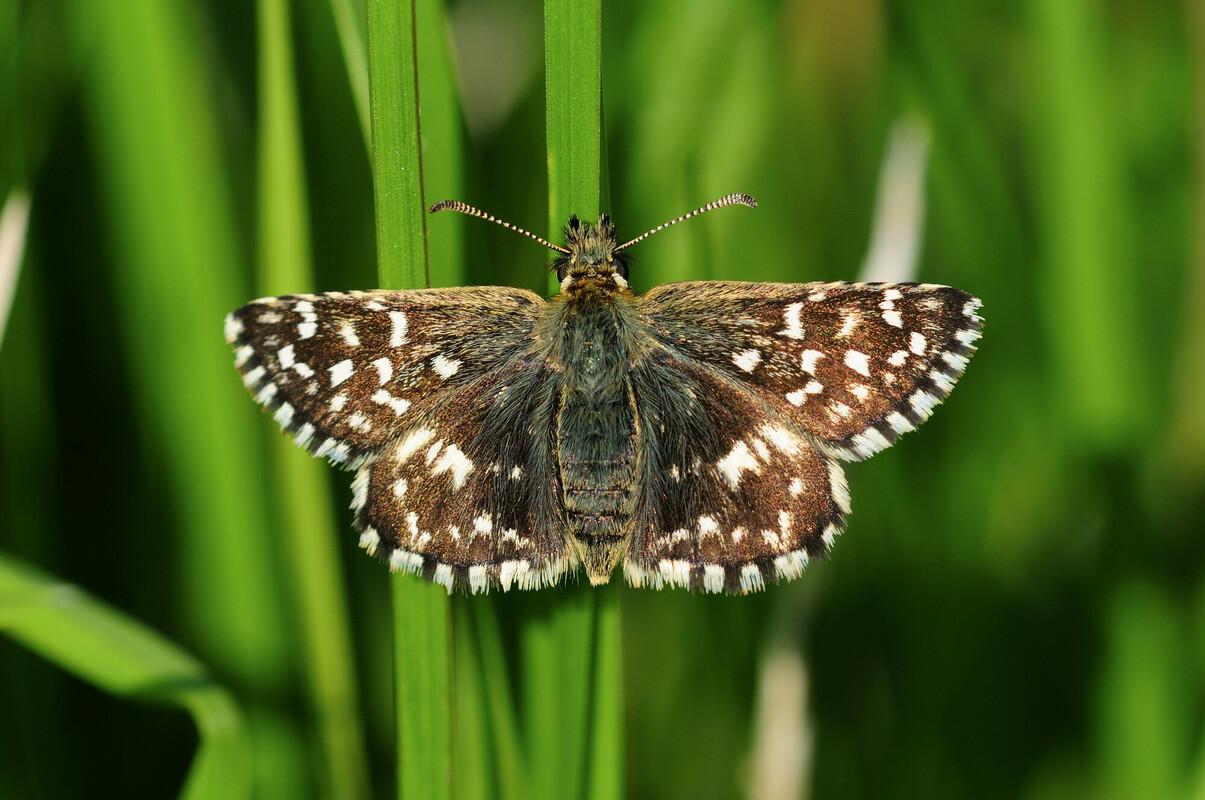
How you can help at home
Spring is the time we turn to our gardens to get them ready for the summer. We are in a biodiversity crisis, but we can all do our bit to help butterflies. Butterfly Conservation is asking you to create a wild space to reverse this decline.
This is easier than you think, and it can be as simple as planting a buckthorn bush in a sunny corner to help the brimstone, growing common bird’s-foot trefoil in a rockery for common blue, hop against a wall or fence, lady’s smock around a pond, or honesty in herbaceous borders. For more details and to register your wild space go to www.butterfly-conservation.org/wild-spaces
Give your time to help butterflies in the Forest
There are lots of habitat management volunteering opportunities in the Forest, including creating scallops and ride management in woodland for the benefit of woodland butterflies, or taking part in surveying, so we know where species are in the Forest and how they are doing. Find out more about volunteering to help butterflies.




